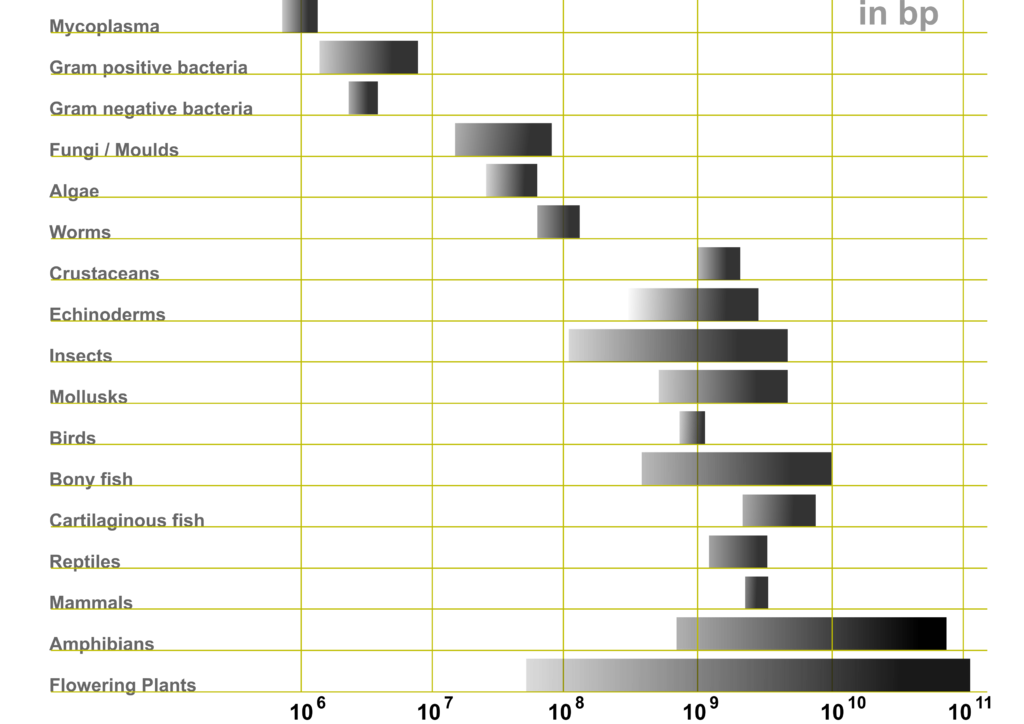New comments on evolution vs creation June 13, 2015
Posted by faith in Uncategorized.trackback
Apparently the microbiologist was once a microbe. This is the irony of evolution as the origin of species. If evolution is true, religion is a product of evolution. This is sometimes used as a way to discount religion’s validity. At the same time, we must accept that the scientific theory of evolution is a product of evolution. This fact alone does not give credence to either evolution or religion.
A few years ago I wrote this:
Present complexity requires either:
a. Pre-existing complexity, or,
b. A system of increasing complexityIncreasing complexity requires:
a. Novelty – the formation of new featuresThe formation of interlocking functional complex systems require:
a. Simultaneous genesis of compatible novelties, or,
b. Mullerian two-stepThe driving force for Evolution is mutation.
Though mutation has been observed, it has generally been seen to create variance.
In the majority of variants, the mutations have been deleterious.So it begs several questions:
1. Has a favourable (advantageous) mutation ever been observed?The effect of mutations depends on the environment in which it occurs.
For example, sickle cell Hb mutation is favourable in an environment with malaria and unfavourable otherwise.2. Has an observed favourable mutation resulted in a novel feature?
Perhaps the best example is antibiotic resistance in bacteria.
However, such mutations have not caused one form of bacteria to “evolve” into a new form.3. Has the evolution of a novel complex interlocking system ever been observed?
4. Has a novel complex irreducible system been carried forward to descendents of the first mutant?
If this has been observed, it lends a lot of credence to Evolution. However, given the limited data we possess that is not circumstantial (e.g. fossils) it would seem that there is insufficient evidence to conclude in favour of evolution. (Note: similarity does not imply a common source; just as statistical association does not necessarily imply causality.)
Hence, because of the limited power of mutations and natural selection, we have been forced to present a theory of origins that requires a process over billions of years.
Now, the driving force behind Intelligent Design or Creationism is a Creator God. This theory of origins does not require a lengthy period of time. There is no physical evidence able to prove or disprove the existence of God. The evidence for and against a God is moral, anthropological, metaphysical and argued on philosophical grounds. Thus, such an argument is impossible to settle with current lack of physical evidence.
The amount of genetic information in various living organisms:
 Notice how the genome size of animals and plants dwarfs that of microbes by a factor of ~1000. This increase in genome size is not purely by multiple copies. Rather it contains new information. Mutations – or mistakes in copying of genetic material – is supposed to have created this new information over millions of years. Yet whilst we have witnessed mutation, the vast majority is deleterious rather than helpful, and rarely (if ever) constitute new information. Even if a mutation could produce new information, it would usually do so at the destruction of some other information.
Notice how the genome size of animals and plants dwarfs that of microbes by a factor of ~1000. This increase in genome size is not purely by multiple copies. Rather it contains new information. Mutations – or mistakes in copying of genetic material – is supposed to have created this new information over millions of years. Yet whilst we have witnessed mutation, the vast majority is deleterious rather than helpful, and rarely (if ever) constitute new information. Even if a mutation could produce new information, it would usually do so at the destruction of some other information.
Evolution can explain variation, but it does not explain speciation. Furthermore, it does not explain the origin of life or of cellular or sexual reproduction at all. The origins of these remain a mystery. Theories have been postulated, but are without evidence whether circumstantial, observational or experimental.
Natural selection is purported to be the cornerstone of evolution along with mutation. While mutation produces variation, natural selection can do no such thing. In fact it reduces variation. It changes the distribution of already existing information.
Perhaps one of the biggest questions for evolutionists to answer is, assuming that life, cellular and sexual reproduction are explained, where is the evidence of speciation (in the fossil record)? Suprisingly, there are significant “gaps” in the fossil record. While we see evidence of many different creatures which have since become extinct and many of them show similarities and differences to each other, at no point have we found any fossil evidence of branch points or “missing links” (transitional forms) where a species can be shown to be splitting into two distinct species.

The red and the dashed lines represents where there is no fossil evidence. Take them out and the evolutionary tree does not look much like a tree at all.